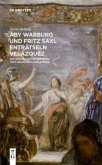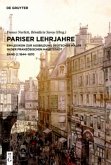Vistas across the land, the landscape, and the garden are a particular hallmark of the Italian palaces and villas of the early modern era. The author of this book provides the first detailed documentation of the Renaissance reconstruction of the antique discourse on vistas of ideal places and architecturally staged and framed views. Making special reference to the treatise of Alberti and the Ducal Palace in Urbino, the buildings and treatise of Palladio, and mannierist and baroque buildings and texts, he also analyses the transformation of the ancient topos of the 'theatre of the hills' and the creation of the new, early-modern paradigm of the ideal view framed by the rectangular 'window with a vista', for which the term 'fenestra prospectiva' was coined in the 16th Century.
Aussichten auf Land, 'Landschaft' und Gärten sind ein bestimmendes Merkmal von Palästen und Villen der Frühen Neuzeit in Italien, deren Diskurse über ideale Orte und architektonisch inszenierte Aussichten in diesem Buch erstmals umfassend rekonstruiert werden. Die Wirkungsgeschichte des antiken Topos des 'Theaters aus Anhöhen' als idealtypische Aussicht einer Villa wird ebenso dargestellt wie die Genese des neuzeitlichen, ungeteilt-rechtwinkligen Aussichtsfensters. Die gebaute fenestra prospectiva (so ein Terminus des römischen Rechts) ist ein prägendes, aber bislang nicht beachtetes Bildmedium, die Aussicht ein wichtiges Thema von Architekten und Auftraggebern der italienischen Renaissance.
Hinweis: Dieser Artikel kann nur an eine deutsche Lieferadresse ausgeliefert werden.
Aussichten auf Land, 'Landschaft' und Gärten sind ein bestimmendes Merkmal von Palästen und Villen der Frühen Neuzeit in Italien, deren Diskurse über ideale Orte und architektonisch inszenierte Aussichten in diesem Buch erstmals umfassend rekonstruiert werden. Die Wirkungsgeschichte des antiken Topos des 'Theaters aus Anhöhen' als idealtypische Aussicht einer Villa wird ebenso dargestellt wie die Genese des neuzeitlichen, ungeteilt-rechtwinkligen Aussichtsfensters. Die gebaute fenestra prospectiva (so ein Terminus des römischen Rechts) ist ein prägendes, aber bislang nicht beachtetes Bildmedium, die Aussicht ein wichtiges Thema von Architekten und Auftraggebern der italienischen Renaissance.
Hinweis: Dieser Artikel kann nur an eine deutsche Lieferadresse ausgeliefert werden.








